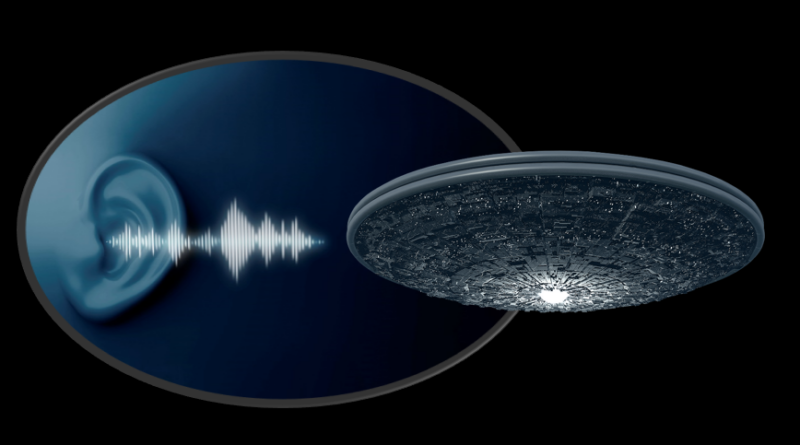THE EFFECTS OF SOUND AND NON-SOUND UFO OF ARGENTINA IN RELATION TO DISTANCE
By CARLOS FERGUSON
“UFO reports emphasize two main points: First, they float in the sky with no indication of a familiar propulsion system such as propellers, jets or rockets. “There is no momentum transferred to the atmosphere and there is a notable absence of violent and noisy descents.” (Dr. James Mc Campbell)
FOREWORD
My fourth article on the physiological effects of UFOs in Argentina in relation to distance has to do with those corresponding to SOUNDS heard and NOT heard by witnesses.
International literature has partially mentioned these effects. In general, they have referred to the UFO sound, defined in different ways by witnesses (buzzing, whistling, booming sounds), etc. But I have found almost no statistical reference to No Sound at close range.
For those who wish to see the previous articles on physiological effects, you will find the links in the citations. (QUOTE 1)
SOUND
The World Health Organization (WHO) defines noise as unwanted sound.
The human ear is capable of capturing sounds of very varying intensity. The decibel (dB) is a unit used to measure the intensity of sound.
In the context of an aircraft, noise is generated due to different circumstances and phases.
“Normally the metric of the decibel is used – a logarithmic measure of the magnitude of sound. Sound intensity is measured in terms of sound levels ranging from 0 dB, which is approximately the threshold of hearing, to 140 dB, which is the threshold of pain” (QUOTE 2)
It is important to note that in UFO literature, many detractors have used the conventional explanation as a confusion of witnesses, including airplanes, helicopters, etc.
But first we must take into account some data.
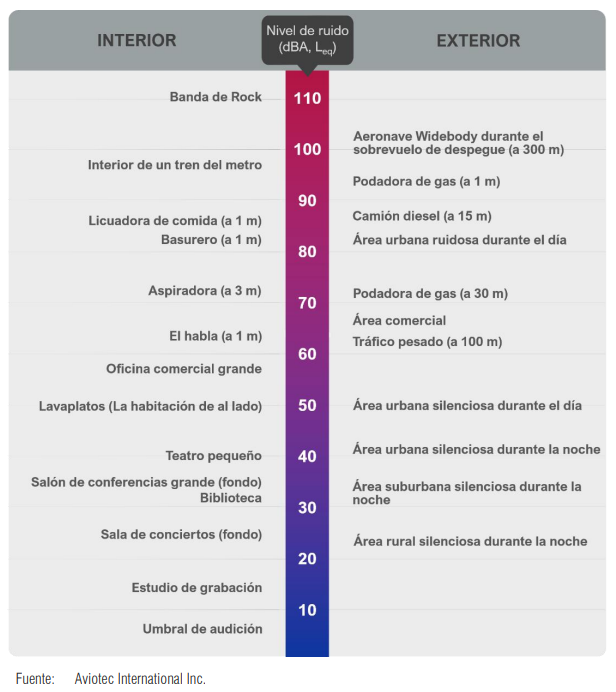
To the left (top to bottom)= Rock band / Interior of a subway train / Blender at 1 meter / Vacuum cleaner at 3 meters / speak at 1 meter / Large commercial office / Next room / small theater / Large conference room / Concert hall in the background / Recording studio / Hearing threshold
To the right (from top to bottom) = Wide-body airplane during takeoff (300 meters away) / Gas pruner at 1 meter / Diesel truck at 15 meters. / Noisy urban area during the day. / Gas pruner at 30 meters / Commercial area / Intense traffic less than 100 meters away. / Silent urban area during the day. / Silent urban area at night / Silent rural area at night
“Aircraft noise is the noise pollution produced by aircraft during the various phases of a flight. The term is primarily used for external aircraft noise.
A jet engine is one of the loudest man-made objects in existence, and aircraft noise can be so violent that even a few seconds of staying close to an aircraft, especially during departure, can lead to hearing loss. . The sound pressure at 25 m from a plane taking off is approx. 150 dBA (decibel -A), enough to burst drums.
In addition to engine noise, shock waves will come in the form of violent tracks if an aircraft has a surge rate, which is not applicable to today’s civilian aircraft. But an airplane produces significant aerodynamic noise long before it reaches audio speed.
Sound production is divided into three categories:
MECHANICAL noise from rotation of engine parts, most noticeable when the fan blades reach supersonic speeds.
AERODYNAMIC noise: from the flow of air around the surfaces of the aircraft, especially when flying low at high speeds.
Noise from aircraft SYSTEMS: cabin and cabin pressurization and conditioning systems, and auxiliary power units.” (QUOTE 4)
On the other hand, and given that the largest number of UFO reports is at night (already established for years in the Time Law), it is important to take another factor into account.
“People are typically more sensitive to intrusive sound events at night, and background sound levels are typically lower at night due to less human activity. Therefore, noise events during nighttime hours are probably more annoying than noise events at other times. For this reason, a night aircraft penalty is normally applied in recognition of the annoyance that is generally associated with late night and early morning noise.” (QUOTE 5)
Another aspect to consider in aircraft sounds are the natural factors that affect noise.
Sound levels decrease based on 3 aspects:
1 – The distance
2 – Atmospheric absorption (according to temperature and humidity)
3 – Ground attenuation
That is why it is important to determine these issues in relation to distance.
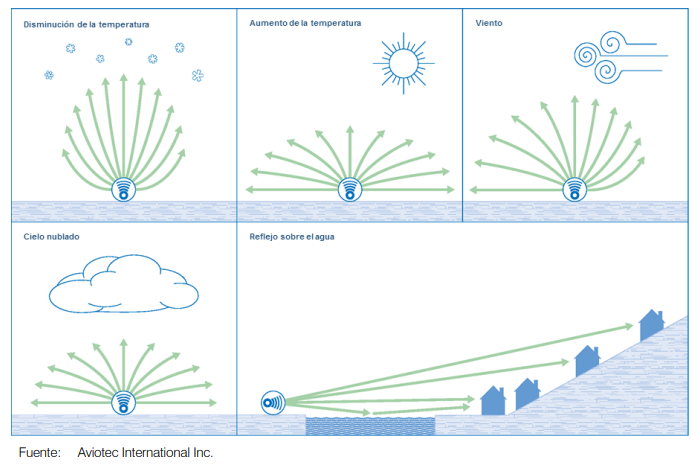
Above: Decrease in temperature / Increase in temperature / Wind
Below: Cloudy sky / Reflection on the water
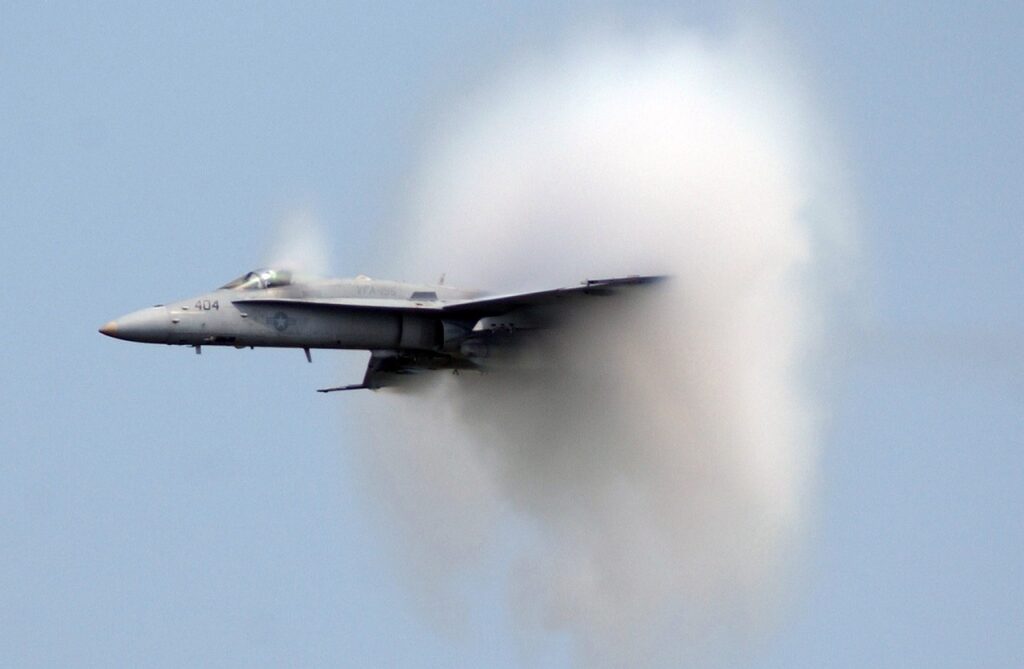
THE UFO SOUND
The in-depth study carried out by Dr. James Mc Campbell (“Effects of UFOs on People”, 1986), details us about sound:
“Several witnesses have responded to the presence of an approaching UFO, in the “Old West” manner, that is, by shooting with a rifle or pistol. Bullets have been heard to hit metal surfaces and hiss on ricochets. Additionally, the landing of nearby UFOs has been heard as a dull thud, like one would expect from the not-so-soft landing of a heavy machine. While these sounds offer no clues to UFO fields, they suggest that the objects under study are not imaginary, vaporous, holograms, ball lightning, or seismic lights.” (QUOTE 7)
Mc Campbell classified five different types of sounds that emanate from UFOs, namely:
VIOLENT (roar, explosion)
LOW TONE (hum, hum)
AIR RUSH (hum, hiss)
HIGH TONE (chirp, hiss)
SIGNALS (beeps, pulses)
And I add:
“Shock waves seem to be generated only at takeoff. While sitting on the ground, the propulsion system is supposed to be off; that is, no external field surrounds the UFO. Energy would then be required to start the field.
It has long been recognized that people can hear electromagnetic radiation in the microwave region.
Radar and microwave radiation from UFOs was suspected to be the cause of the hums. Relatively little was known about this phenomenon 15 years ago, but it had been well established that the auditory response was caused by short bursts of energy corresponding to the pulsation of the microwave source.
Therefore, at very low intensity, pulsed microwave radiation at 50 to 100 cycles per second would be “heard” and accurately described as a hum.
Animal experiments showed that cats were 20-30% more sensitive than people, but in the dog test, it was 5 times more sensitive. «That result may explain why agitated dogs are the first sign of many UFO events.» (QUOTE 8)

(Dr.James Mc Campbell) (Combined images Gerd Altman and Randy Rodriguez – Pixabay)
Mc Campbell has also noted:
“UFO reports emphasize two main points: First, they float in the sky with no indication of a familiar propulsion system such as propellers, jets or rockets. No momentum is transferred to the atmosphere and there is a notable absence of violent, noisy downwelling waves. The objects seem to defy gravity.
The other point is its strange way of fluttering. Observers are frequently surprised by sudden acceleration that far exceeds normal experience, also by instant stops and right-angle turns at high speed. “UFOs not only appear to be antigravitational, they behave as if they have no inertia.” (QUOTE 9)
In summary, Mc Campbell (expert in Engineering Physics), relates:
“Violent sounds with the application of energy for rapid acceleration or deceleration, low-pitch sensory effects such as hums in a modulated microwave emission, and high-pitch sensory effects such as whistles, in the emission of auditory frequencies in the range of 1,000 to 10,000 cycles per second” (QUOTE 10)
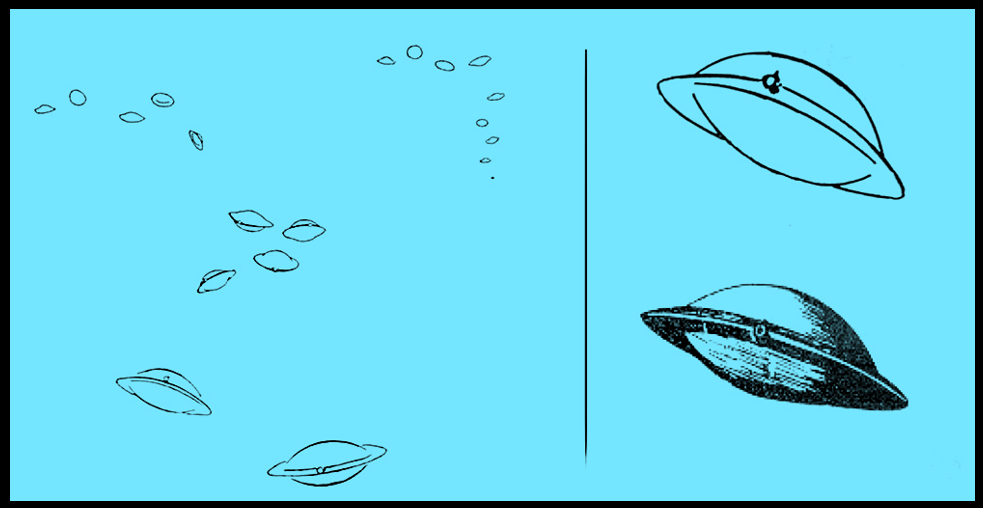
SOUND OF UFOS IN ARGENTINA
In Argentine cases we have the following sounds recorded:
BUZZING = 128 data
PURRING, BOOMING, EXPLOSION, RUMPING, DEAFFING = 30 data
WHISTLES = 30 data
Now established all the cases where we have sounds in Argentina, we have:
1 – Information with very precise distance data = 126 cases
2 – Information with approximate distances = 40 cases
For the latter, I have established a standard parameter of witness descriptions (estimates), defined this way:
Above the house or vehicle = 10 meters
Over nearby trees = 30 meters
“Next to the road” = 50 meters
“In a neighboring field” = 500 meters
The first graph shows us the PRECISE data:
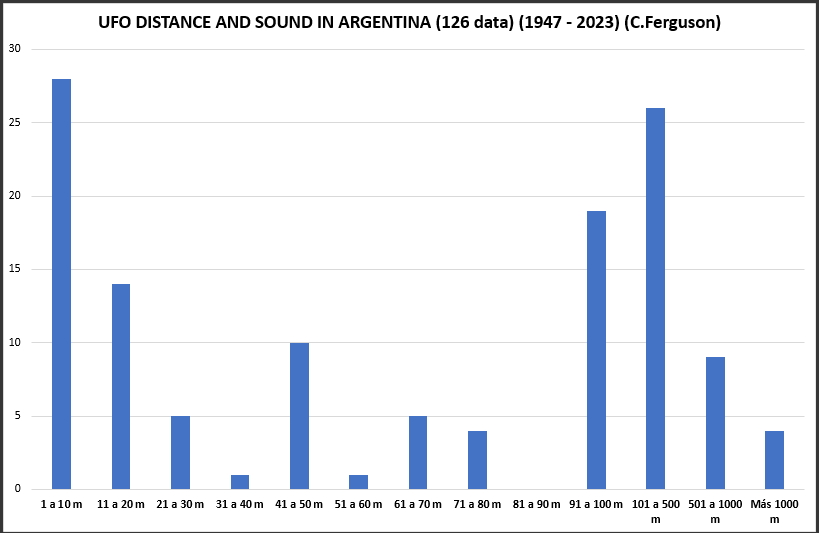
In this second graph below, I have also added the cases of APPROXIMATE estimates:

Finally, unifying the concrete and approximate data with UFO sounds in Argentina, we have the graph with the following result:
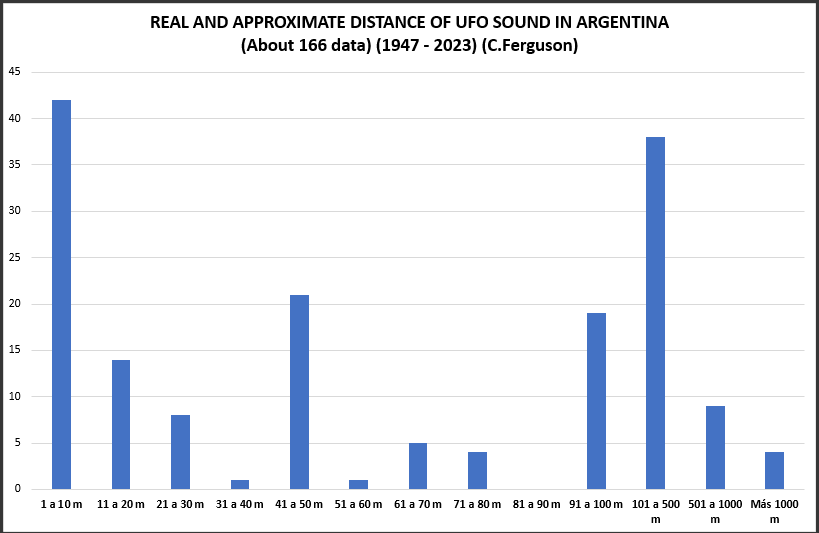
ABSENCE OF UFO SOUND
On the subject of UFO SOUND it is not only important to determine its presence but also its absence.
I’ll explain myself better.
One of the predominant factors described by witnesses not only refers to the various sounds that the UFO causes.
In many other descriptions we find that witnesses who are at a relatively short distance from a UFO report the total absence of sound, which usually generates a deep impression on them.
Observers describe it in many ways:
“There was no noise at all”
“Everything was completely silent”
“What scared me the most was that I couldn’t hear anything.”
How can we explain the total absence of sound in objects that take off at speeds described as “terrifying” from no more than 20 meters away?
Here is the question that has motivated me not only to quantify the cases of sounds but also the total absence of them.
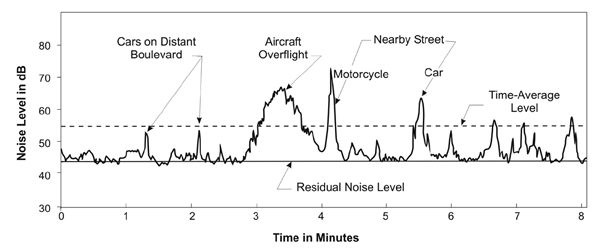
Among the few references to the subject – as I noted at the beginning I have not found any statistical work on the matter – I was able to find the reference of the remembered Dr. James Mac Donald in his “Statement prepared on Unidentified Flying Objects” before the Committee on Science and Astronautics from the USA Mac Donald (we remember him), was a Physicist at the Institute of Atmospheric Physics and Professor in the Department of Meteorology at the University of Arizona. He pointed out:
“A physical effect is related to sonic booms. Although there are some recorded cases where fast-moving UFOs were accompanied by explosive sounds that could be associated with sonic booms, there are many more cases where the reported speed corresponded to supersonic speeds, but no explosions were reported.
A small fraction of these can be rationalized by noting that the reporting witnesses were located within the «Mach cone» of the departing UFO; but this will not be sufficient to explain the difficulty.
One feels that if UFOs are solid objects, capable of leaving depressions in the ground or sleepers when they land, and if they can disappear from view within a few seconds (as has been repeatedly claimed by credible witnesses), they should produce sonic booms. This remains inexplicable; one can only weakly speculate that perhaps there are ways to eliminate sonic booms that we haven’t discovered yet; perhaps the answer involves a completely different consideration. (end of quote)
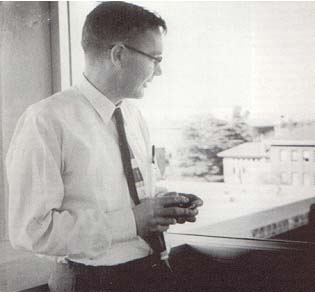
We can also find what was pointed out in the Sturrock Panel (1997):
“A report may describe an object that is stationary, but completely silent and without visible means of support; there is no rush of air or roar as one would expect if the object were being supported by a downward jet of gasoline. The object may be reported to make an abrupt change in speed – either a very sudden acceleration or deceleration, or a sudden change in direction, or both, and the witness may describe the event as completely silent. According to Newton’s third law of motion, any sudden change in the momentum of an object must be accompanied by an opposite change in the momentum of the matter or field to which the object is coupled.” (End of quote)
ABSENCE OF UFO SOUND IN ARGENTINA – WHAT THE DATA SAY
The possibility of handling complete data on Argentine cases, to be able to carry out this type of study for the first time, is something fascinating. Together with Mr. Angel Díaz, we have been the most interested and committed in the statistical work.
In this case, and given what was stated above, it was necessary to determine how the absence of sound manifests itself in relation to the distance of the witnesses.
Focused on that task, I was able to complete the studies with these initial results.
In this first graph we observe the PRECISE distance data with total absence of sound:
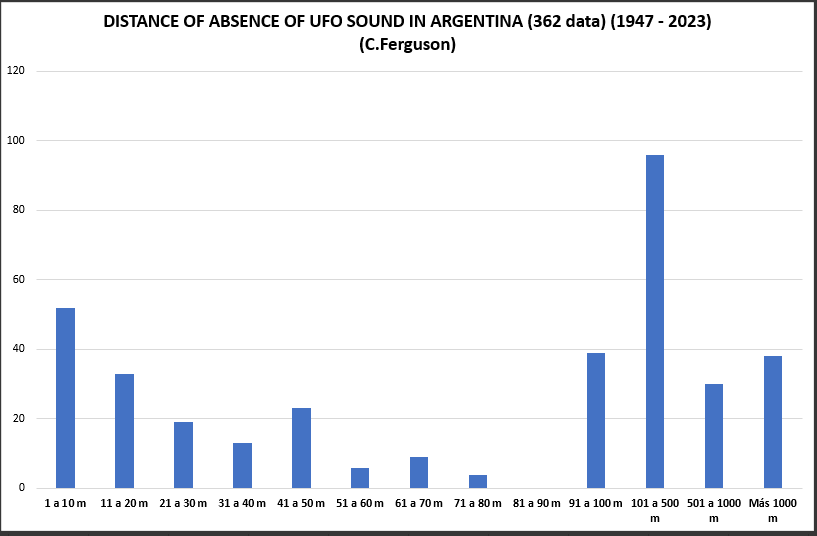
We can see from 362 data that there is a significant percentage of cases at very short distances, where the absence of sound from the reported object was total. We talk from 0 to 80 meters. It is totally impossible that at these distances witnesses do not perceive any sound in our conventional objects, but this does not seem to be the case with UFOs.
In this other graph, we can see the data of APPROXIMATE distances of witnesses to the UFO. As in the Sound cases, I used the same standard parameter, with these estimates:
Above the house or vehicle = 10 meters / Above nearby trees = 30 meters / “Next to the road” = 50 meters / “In a neighboring field” = 500 meters
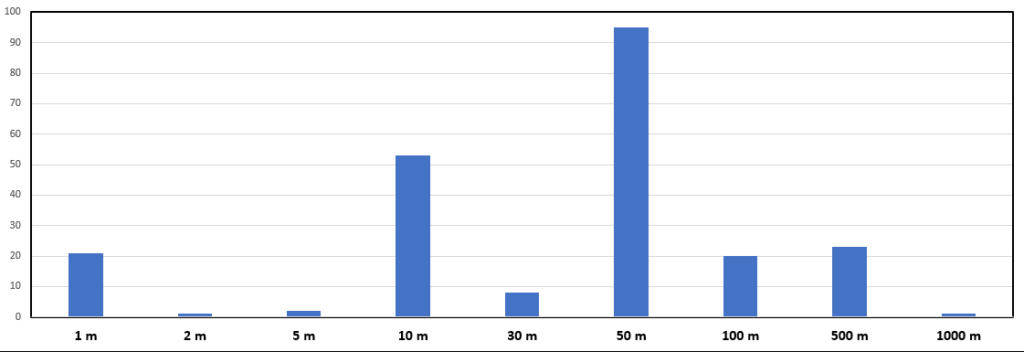
We clearly see that the most significant absences of sound are those that range from 1 to 50 meters away. It is that stripe that draws our attention powerfully.
Finally we have the JOINT graph of cases WITHOUT SOUND with «Precise» and «approximate» data:
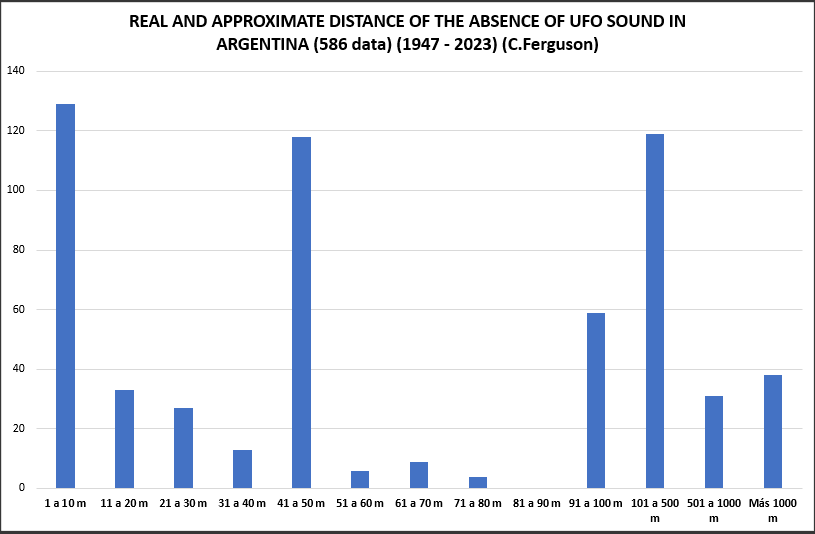
On 586 data, the results are very eloquent. We have a majority of events where the UFO was in a range of 1 to 70/80 meters, and where the witness(es) present did not hear any type of sound (even in cases of takeoff).
MANEUVERS AND ABSENCE OF SOUND
Regarding the ABSENCE of sound, I also focused on a key aspect: determining what maneuvers the witnesses described in their proximity. This is essential, especially when we talk about the total absence of sound at short distances.
I found 592 detailed, as follows:
APPROACHES (on vehicles, witnesses) = 133 data
OBJECTS RISE FROM EARTH = 86 data
STATIC OBJECTS (usually posed) = 81 data
OBJECTS IN STRAIGHT FLIGHT = 80 data
OBJECTS DESCENDING AND ASCENDING (over land or water) = 61 data
OBJECTS DESCENDING (over land or water) = 56 data
OBJECTS WITH VARIOUS MANEUVERS = 44 data
STATIC OBJECTS AND THEN ACCELERATING = 41 DATA
OBJECTS IN FLIGHT ZIG ZAG = 10 data
Outside of the events of Static objects (14%), in all the rest, there should be some sound audible to humans at the distances we are mentioning.
TOTAL DETAIL OF SOUND AND ABSENCE THEREOF IN ARGENTINA
Below we have an illustration that shows us the presence and absence of sound, in all the cases studied.
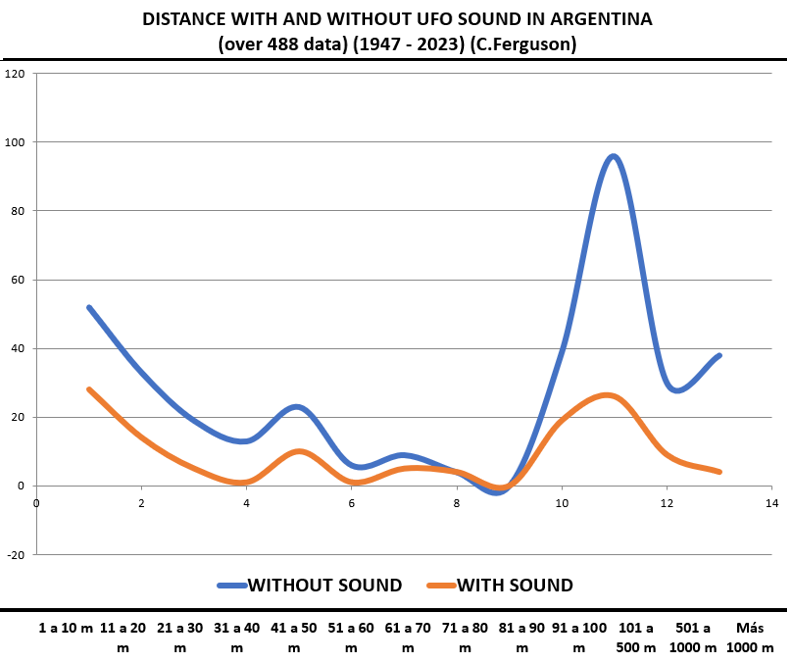
We can notice some similar trends. Mostly from 1 to 100 meters, we have the vast majority of cases. There are both perceived sounds and their absence.
Finally, and only as an additional item, I have made a comparison with another International catalog (in this case the “Magonia” by the great J. Vallée).
I dedicated myself to reviewing such a catalog (case by case), to find the established distances (precise and approximate). The latter, maintaining the same range that I have applied in Argentina.
Furthermore, I excluded the Argentine cases in Magonia, since all of them were already present in my study.
In short, from «Magonia» I was able to extract 300 precise cases and 141 approximate cases (441 in total).
In the graph we then have 1027 data (586 from Argentina and 441 from Magonia), whose results are the following:
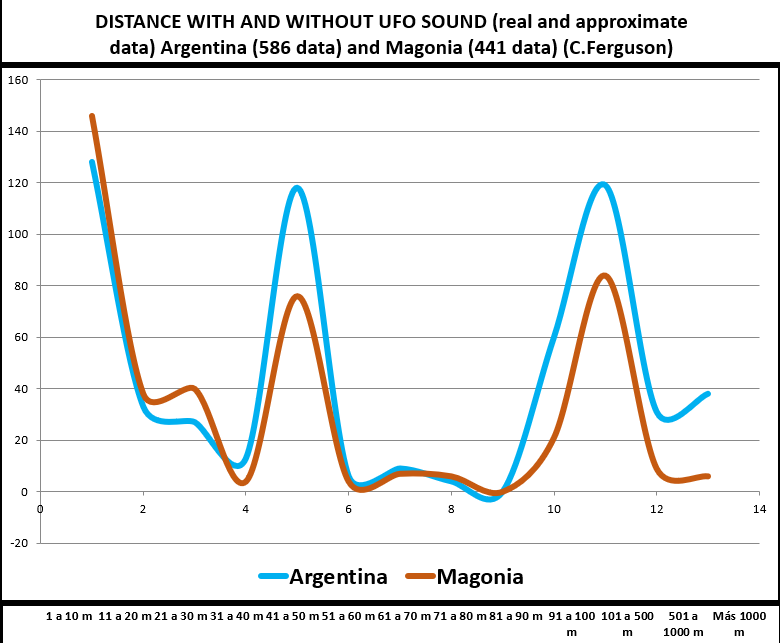
Certain trends are very noticeable. It would be key to be able to find studies from other countries (there are very few), to be able to compare this information.
CONCLUSIONS
A – The sound effects in UFO witnesses in Argentina show identical parameters to those that occur internationally, both in its presence or absence.
B – The sound effects in relation to distance (with precise or approximate data), gives the expected results, with a slight supremacy exceeding 100 meters.
C – The effects of NO sound in relation to distance (with precise or approximate data), gives a striking percentage of cases at a very short or relatively close distance (from 0 to 100 meters we have 55% of cases). This is totally contrary to what happens with our conventional objects. As we know, the noise characteristics of conventional aircraft vary depending on departure profiles or takeoff climb rates. Temporal factors at the time of the event also influence there. But in none of these cases, can we find the slightest sound that should have existed.
D – Therefore, it is not possible to explain the NO sound at distances so close to the observers, according to our concepts and technical parameters of conventional aircraft.
E – It is key to continue and deepen these studies, comparing them with some carried out in other latitudes. The majority of UFO participants consider delving into these aspects «boring», and their attitude has been the cause of the immense delay of an analysis that should have been carried out years ago.
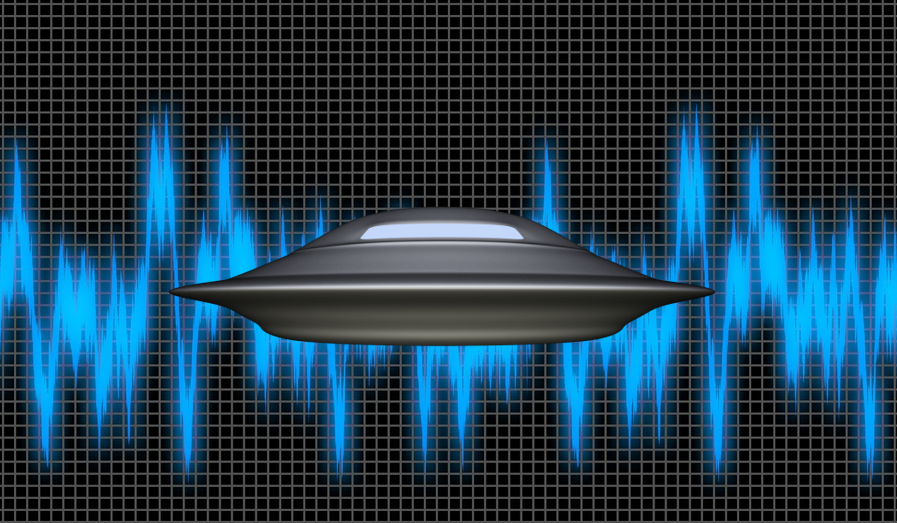
EPILOGUE
When some theorists claim that everything has already been said on the subject and that it leads nowhere, they have never duly delved into the information, nor have they taken the trouble to compile all the immense wealth of data. They prefer to ramble on in hypotheses and theories, rather than focus on examining the pieces of the puzzle that are scattered around (only for those who want to find them).
Meanwhile, popularizers will continue trying to present «the perfect case» and the «scoop» or personal figuration, without ever examining this type of data, looking for magic and quick solutions.
And from the official point of view in Argentina, we find the office that is dedicated to «studying» nothingness itself, and collecting the occasional photo as another photographic laboratory, loaded with prejudices and erroneous data. (QUOTE 11)
But the UFO case has an infinite amount of information to gather.
Unfortunately, this task has been carried out by a few researchers, so these issues have not been worked on as they should. But this single sample is enough to notice the great lack of collective joint work that should have been done several years ago.
At least, we are compiling all the information available for the first time in Argentina, and that is what encourages us to the extreme, far from the huddles, the bipedal languages, the priority of images and the latest scoops.
CARLOS FERGUSON

The author: He the first advisor to the Argentine Air Force (2011 to 2017) in Ufology. Carlos Ferguson works in the Logistics areas of the Ministry of Education (Province of Buenos Aires – Argentina), and administrative tasks. He is also a professor of artistic drawing and has been dedicated to researching the UFO topic for 48 years, when, being a non-believer, had a close encounter no more than 35 meters away with a disc-shaped UFO. He has courses in Satellite Technology, Remote Sensing and Geographic Information Systems. Author of 7 books and the largest compilation of landing cases in Argentina, with classified events. He has also carried out studies on cases of pilots and UFOs in Argentina, as well as underwater objects and the most recent, on the physiological and electromagnetic effects on witnesses. Hundreds of talks and notes over almost 5 decades show him with a line of work adjusted to the parameters of statistics.
QUOTES
QUOTE 1: Below are the 3 links to my previous works on physiological effects in UFO witnesses in Argentina:
QUOTE 2, 3, 5 and 6: “Noise management study” – Comodoro Pierrestegui Airport, Concordia, AR – Aviotec, July 30, 2018.
https://entrerios.gov.ar/uep/archivos/Estudio_de_gestion_del_ruido_Infome_final.pdf
QUOTE 4: https://www.hisour.com/es/aircraft-noise-38157/
QUOTE 7, 8 and 9: “UFO Effects on People” – Dr. James Mc Campbell – A summary was presented at the 1986 UFO Symposium sponsored by the Mutual UFO Network. Also at the 24th Annual National UFO Conference, at the Burbank Hilton Hotel, Burbank, California, June 12-14, 1987. The full text was first published in the work of Hilary Evans with John Spencer, Editors for the Association British UFO Investigation, Fortean Times, London, 1987. OR 1987.
QUOTE 10: “Graphic encyclopedia of hidden themes” – Phenomeno Ovni, Editorial Uve, Spain, 1982.
QUOTE 11: Aerospace Identification Center (CIAE)

